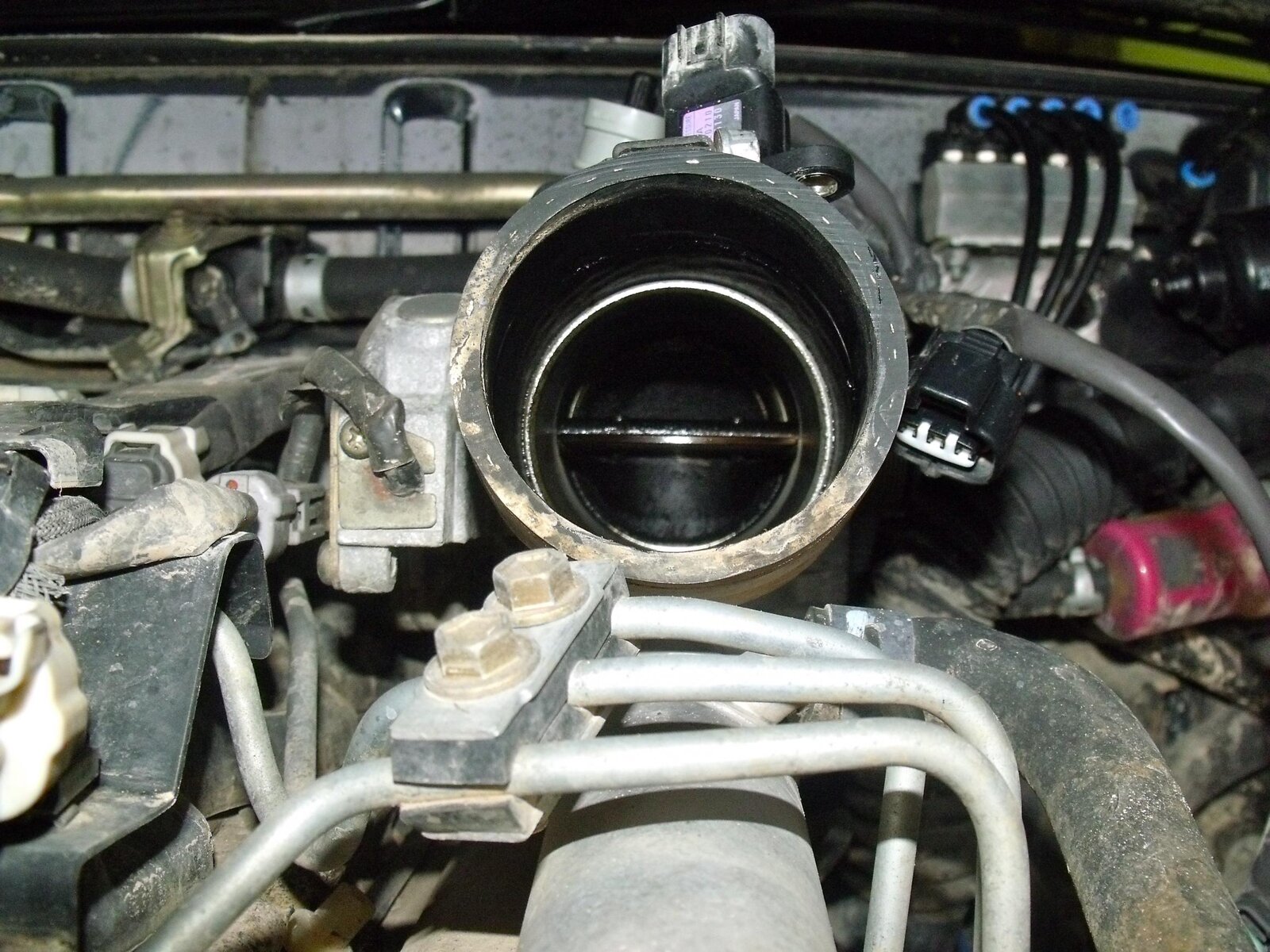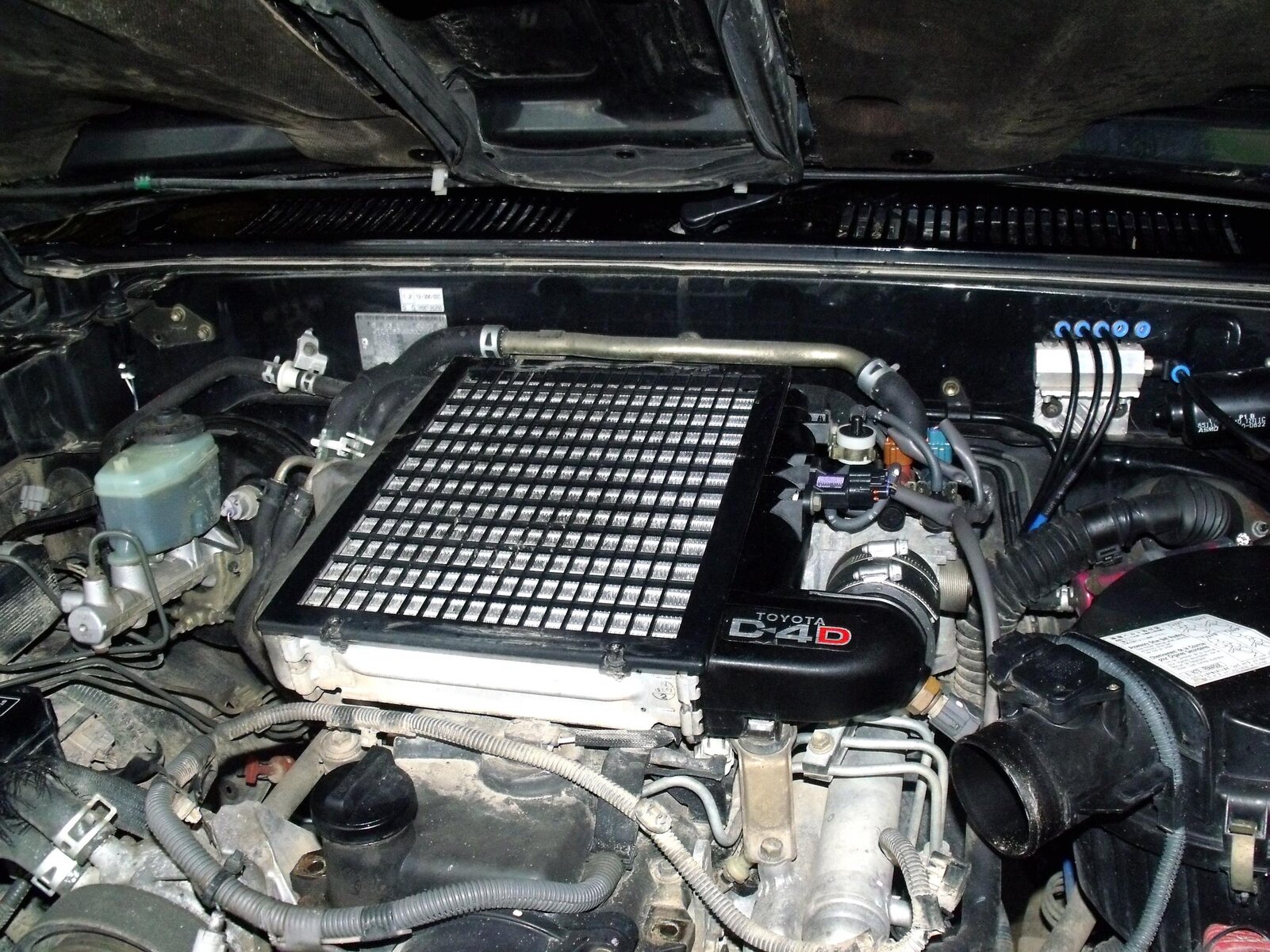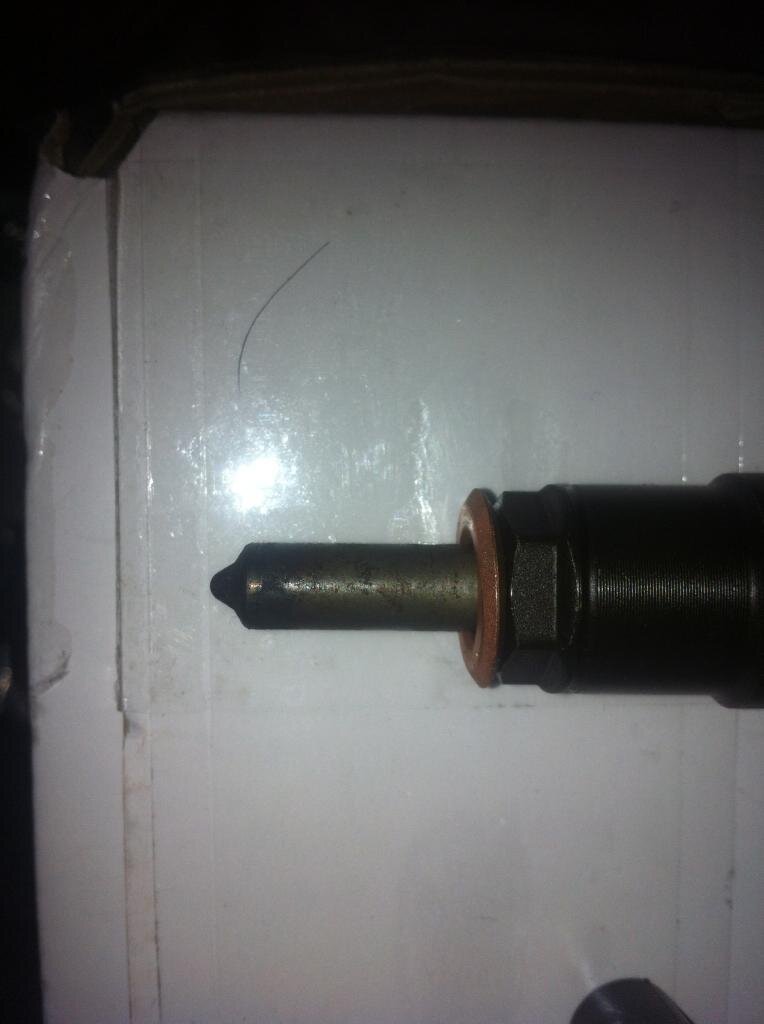Tommo&Claire
Well-Known Member
Morning All,
I know you are all fans of rebuild type threads with pics so i thought id add my own for you all to see. Plus it'll provide some interesting background on certain D4D issues i which i know worry some.
Background:
I was out having some axle twisting, mud plugging fun back in September when out of nowhere my beloved truck began making some concerning noises. Noises i had never heard before. A groaning, squealing, high pitched scraping which increased in volume and pitch with engine speed. Although i obviously suspected the turbo, at this stage i had no loss in boost pressure and other than the noise the truck appeared to be running just fine. That being said i thought it was best if i called an end to the off road antics and retired home for more diagnosis. Other than the noise, the truck made it all the way back to Fareham on the motorway (around 50 miles) and literally about one mile from the house i lost turbo pressure and limped it home billowing clouds of blue smoke. But being a Land Cruiser of course, she got us home safe!
I got up the next morning having slept on the problem a bit and i knew that the truck would now be off the road till approximately July 13. The plan at that stage was that i was deploying overseas in january and all my time between then and getting on the plane would be spent in training, so the plan was to SORN it, stick it in the garage and deal with it on my return. In the meantime i have been running a petrol 80 with LPG which i have borrowed off Les, so now i have an interesting perspective on the ownership of land cruisers almost at the two ends of the scale! Also i broke my ankle in deployment training so didn't end up deploying after all, thus i now have time to mess with it.
Disassembly:
So firstly and most obviously, the turbo has got to come out, easier said than done with a D4D unit in a 90 series engine bay! Not a great deal of room to work, but between myself Greg and Les we managed it, here are some pics along the way.
So to get the turbo out you can either go in via the off side wheel arch, but that would entail the removal of the entire suspension and hub assembly, which having done that to replace all the bushes was not a job i particularly wanted to repeat.
The other option is from the top, but that means that the intercooler, throttle assembly, exhaust manifold etc have got to come off. still a pain but the lesser of two evils. Whilst apart it also gave me a chance to see how coked up my throttle and EGR assembly was...
As you can see, not a huge amount of room to work, but its all pretty logically laid out and other than access issues, comes apart pretty easily.
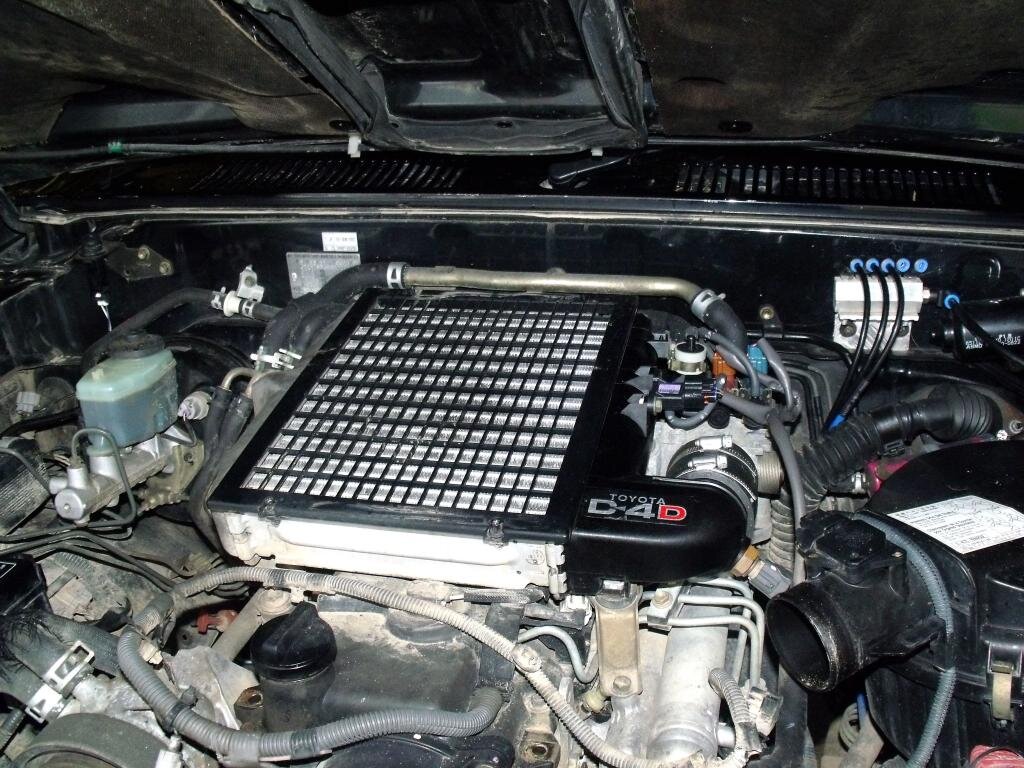
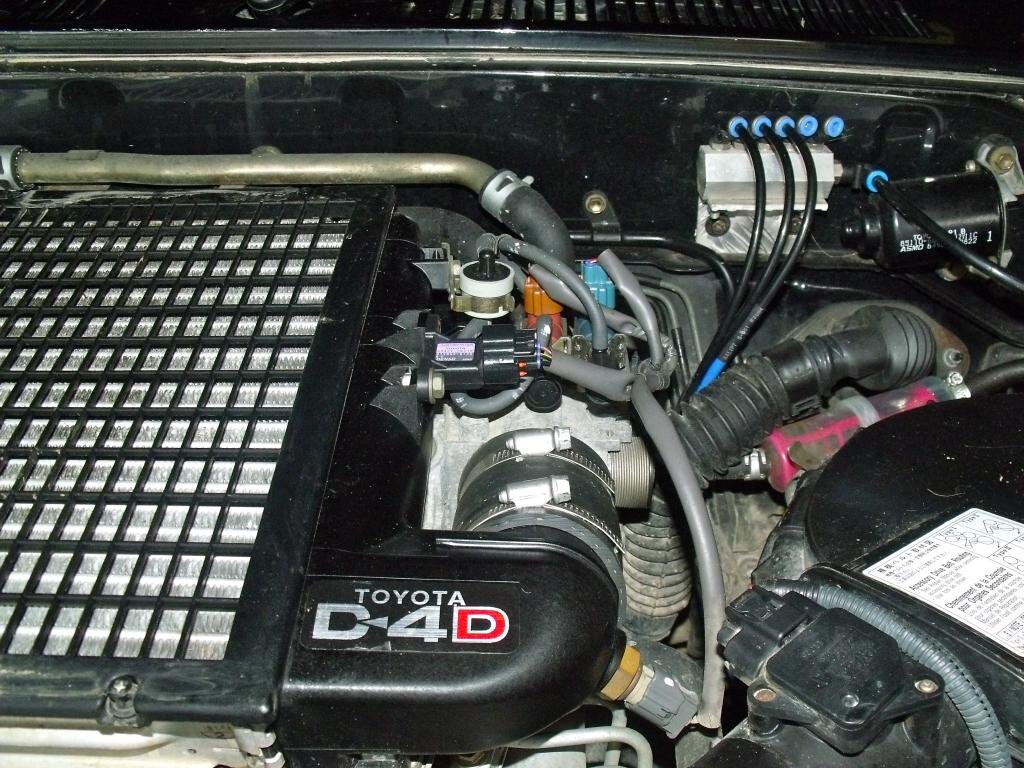
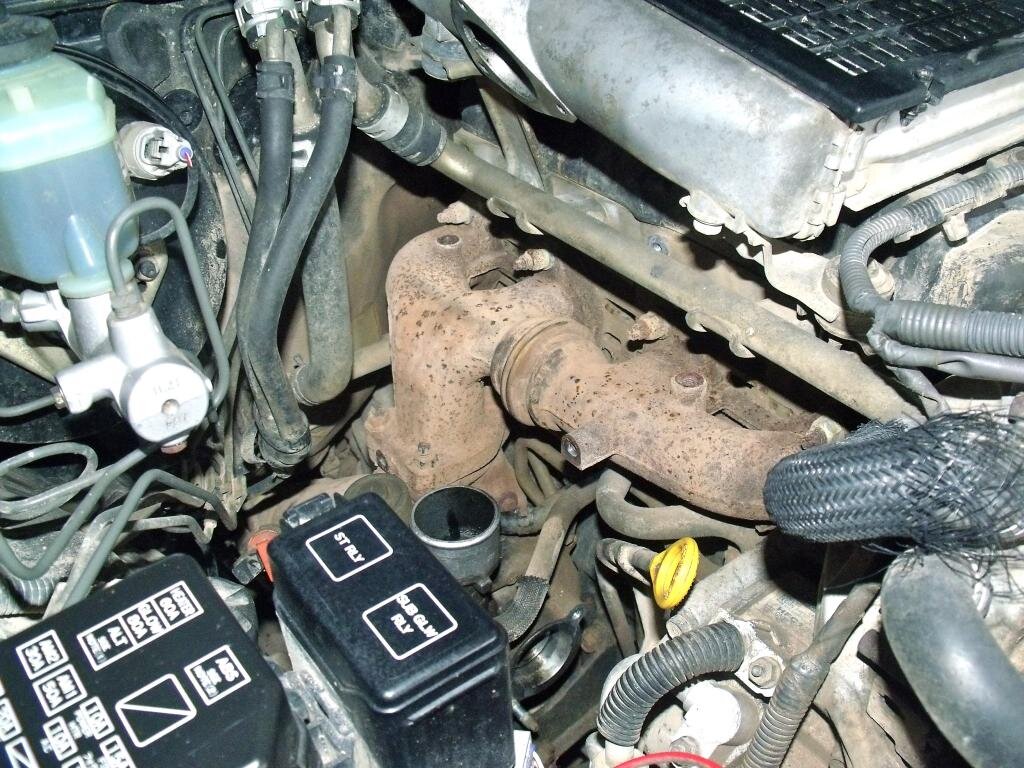
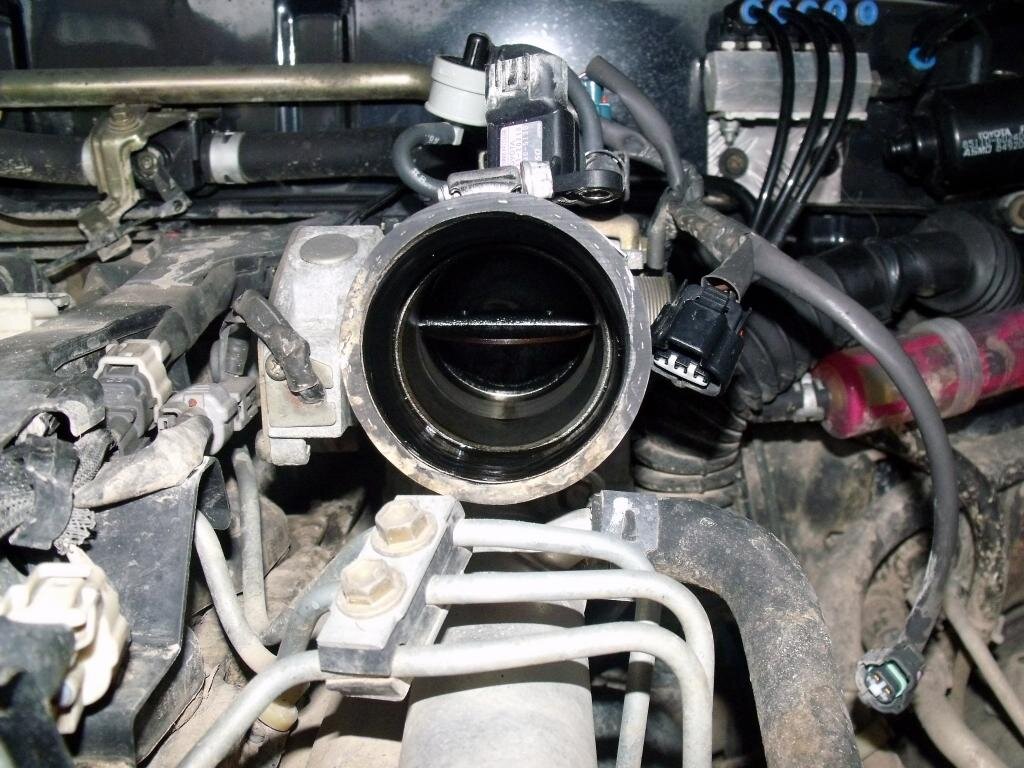
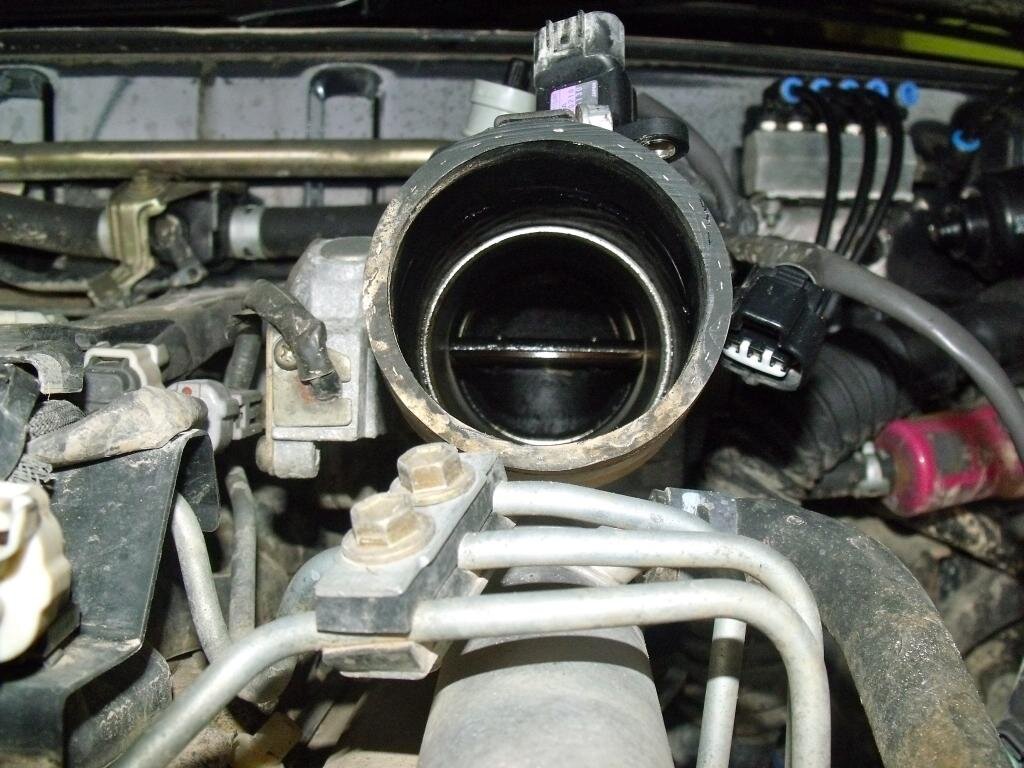
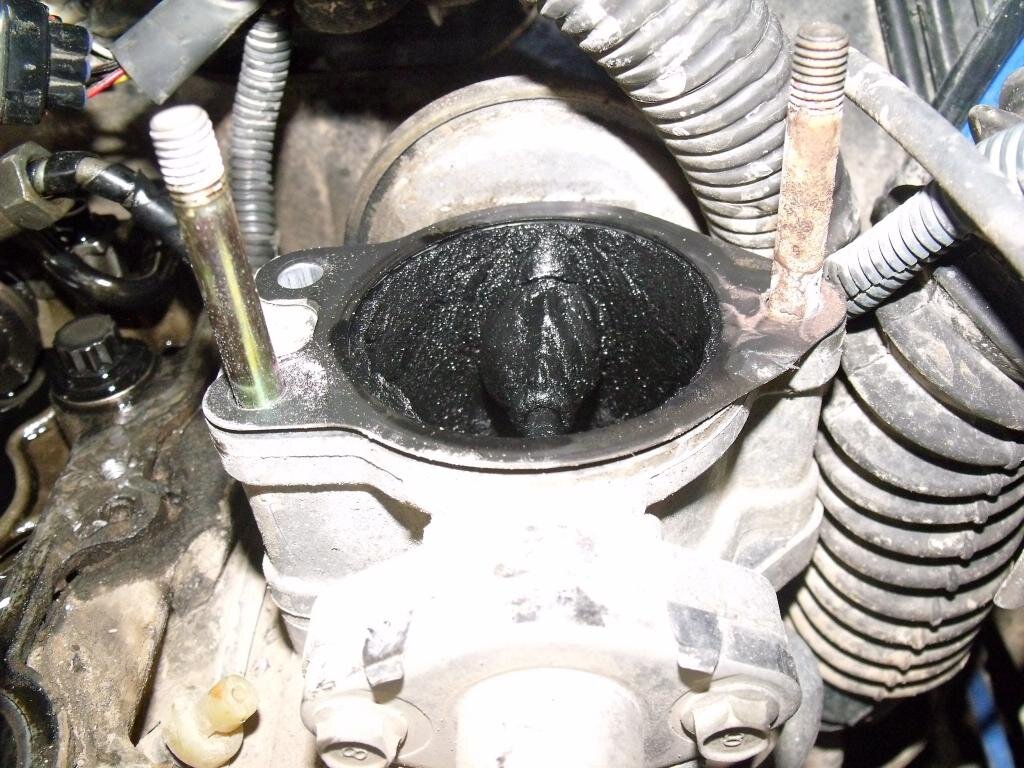
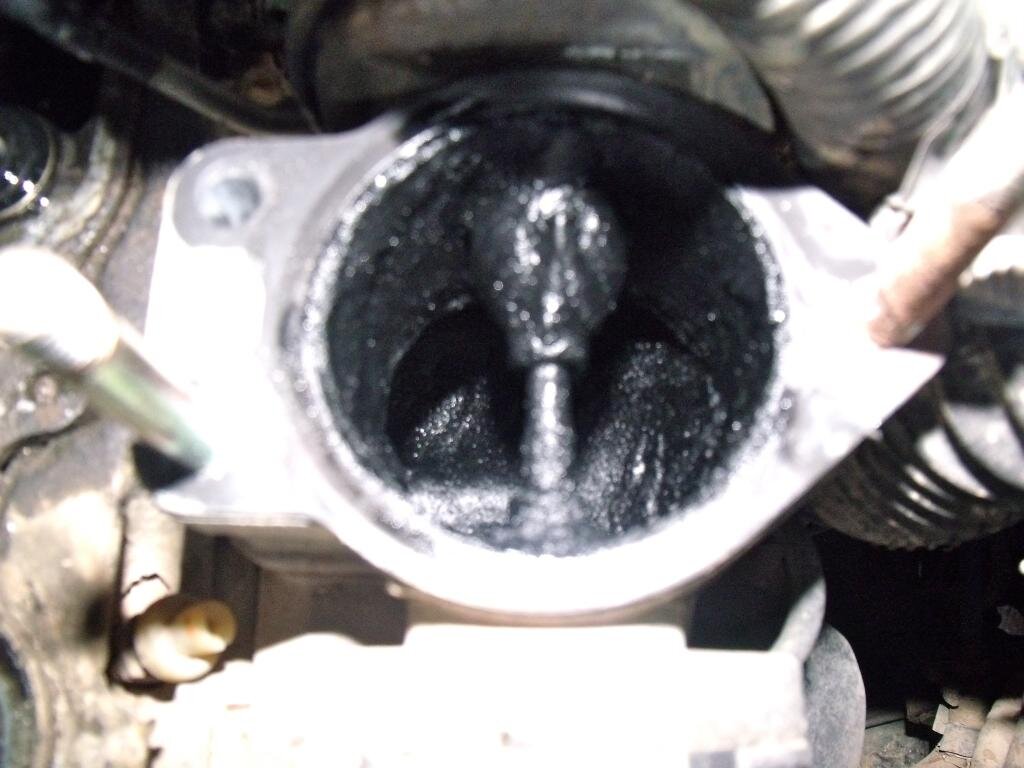
To get the intercooler off you need to remove the throttle assembly and from there you get get access to the EGR. I thought after 155000 miles the throttle and EGR would be well coked up but in fact it's not too bad as you can see, and rather than take it all to pieces and give it a good clean out i think i shall use some spray EGR cleaner once she's running again during the rebuild before the intercooler goes back on.
Right the turbo, sorry i didn't take pictures of this but, it's a turbo, a muddy one but just a turbo and i was busy, oily and muddy at the time so forgot to take pictures! As soon as we got the feed pipe to it off the problem was identified. The main bearing that the blades spin on was very loose. If you put your finger on the central spindle then you could wiggle it about 2mm in every direction, so problem located, knackered bearing. Of course because of this, the blades had been impacting the inside of the turbo housing and 200,000 rpm and were also knackered.
So the turbo went off to Universal Turbos in Ringwood for reconditioning. Fortunately we went through a friend of a friend and got the job for cash and it comes in at 500 quid. Quite expensive after xmas! However, this basically is where they take your turbo and replace the insides, so new bearings, blades, seals etc, basically all mechanical parts but does not include the electrics or "the brain" of your turbo. For those of you who have no experience of D4D turbos, this is what i have learned:
The D4D Turbo is a specialist Toyota item, which is why it's so expensive to replace and repair, it's not a Garret or any other common make. It is what's known as a variable vane turbo because, unlike the turbo in say an 80, the blades alter their pitch similar to the propellors on an aircraft or a ship. The computer on the turbo measures the flow through the turbo and the throttle position (hence the reason why D4Ds are fly by wire) and alters the pitch of the blades. This means that when you first put your foot down for example, the blades are at a very low angle of pitch relative to the airflow, reducing the resistance and allowing the turbo to get up to speed quicker, hence next to no turbo lag in the D4D engine. Then as the blade speed increases, it winds on the pitch, increasing the output and the power, giving you a nice power curve right the way up to the redline. Clever no?
And before i get bored to death with the same old "all these clever electrics, they just fail" shit, i asked the guy at universal turbos the same question and he's been doing this for thirty years and has yet to see the brain on a toyota turbo fail, he has NEVER replaced one.
So, problem solved?..... No
I'm sure all your engineering brains are screaming "yes but why did the turbo fail in the first place????"
Well, as it happens, so was mine.
So immediately i had nightmares about injector washer failure and blow by causing my engine to look like the boiler on an old steam ship! Usually, turbos fail for a reason, and the most common of these is an interruption in the oil supply as all the spinning parts are sitting on a thin coating of oil, an interruption is catastrophic! So, in short, theres no point in paying out 500 notes for a turbo recondition because it'll just happen again not far down the line.
So, the rocker cover has to come off and the sump so i can check the strainer. And as the rocker cover is coming off the injectors are coming out and being sent off for test to see what state they're in after 155000 miles.
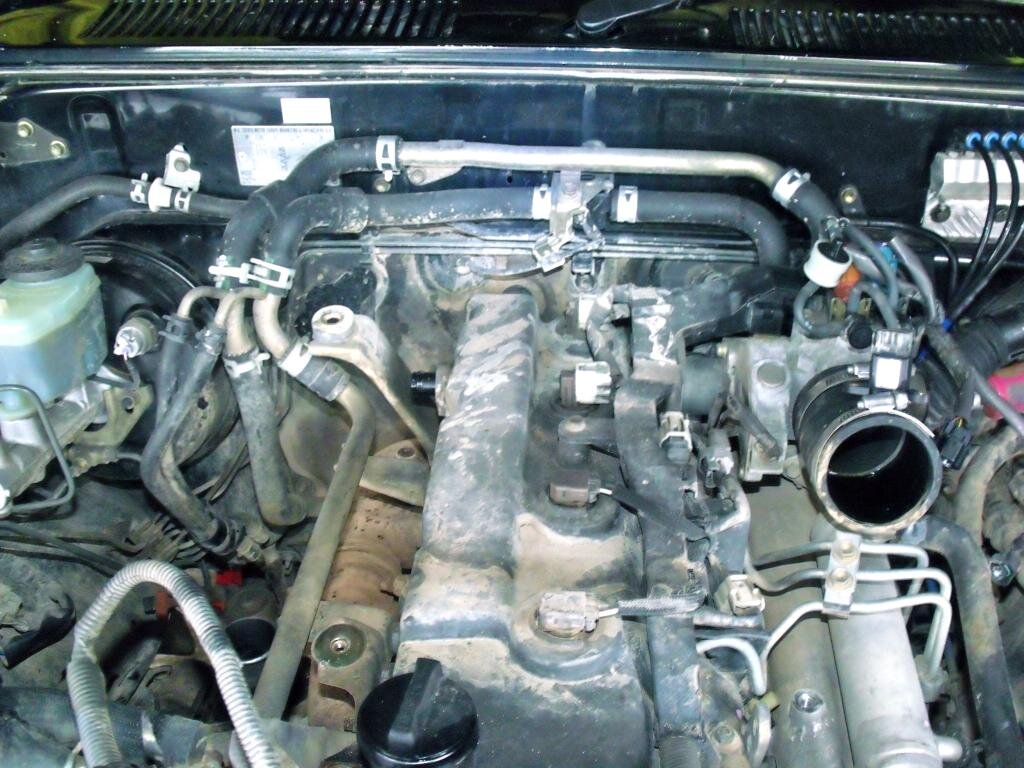
So with my heart in my mouth, the rocker cover came off. I knew that my engine was far too old to have any of the crap injector seal issues but i was crapping myself anyway!
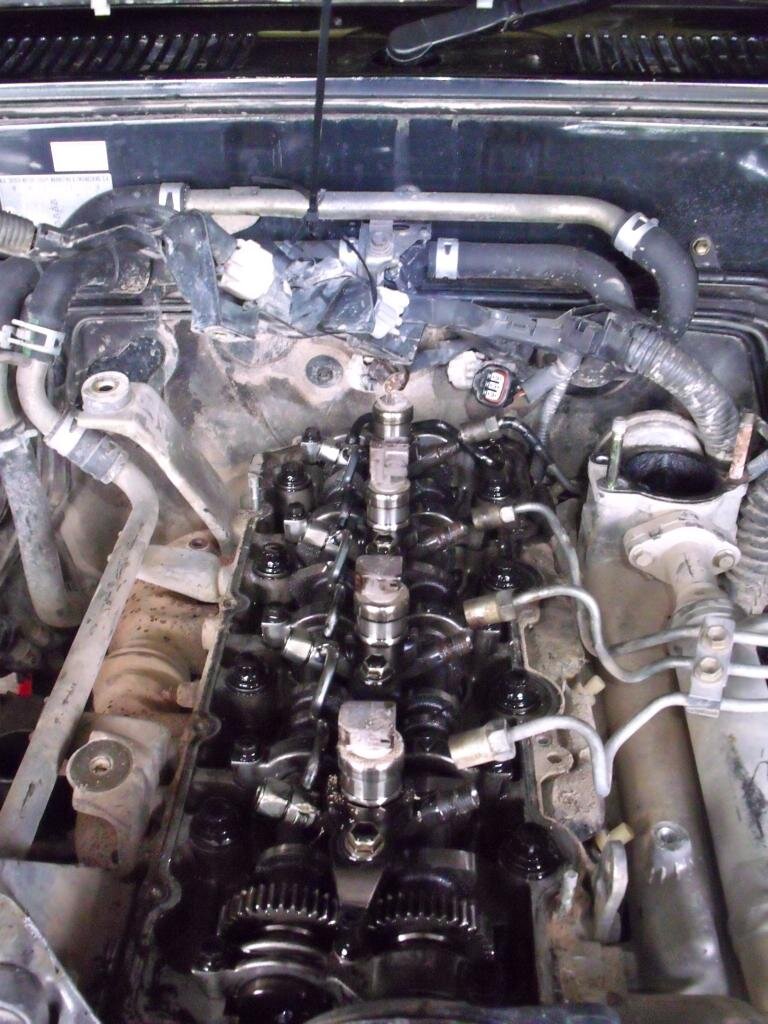
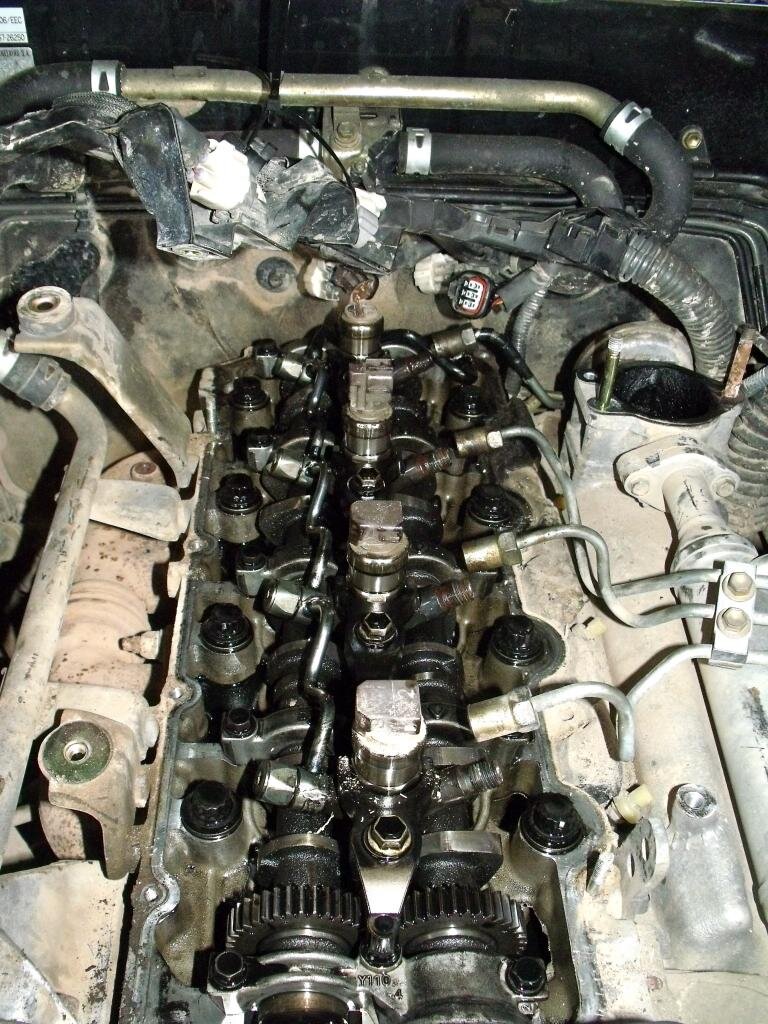
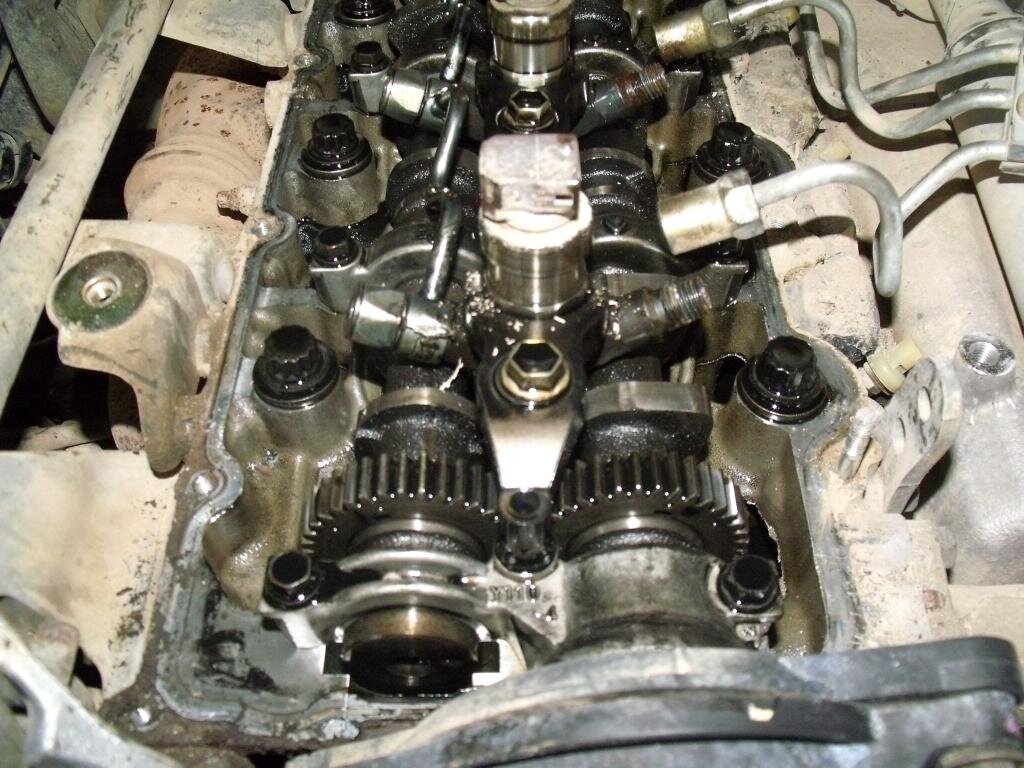
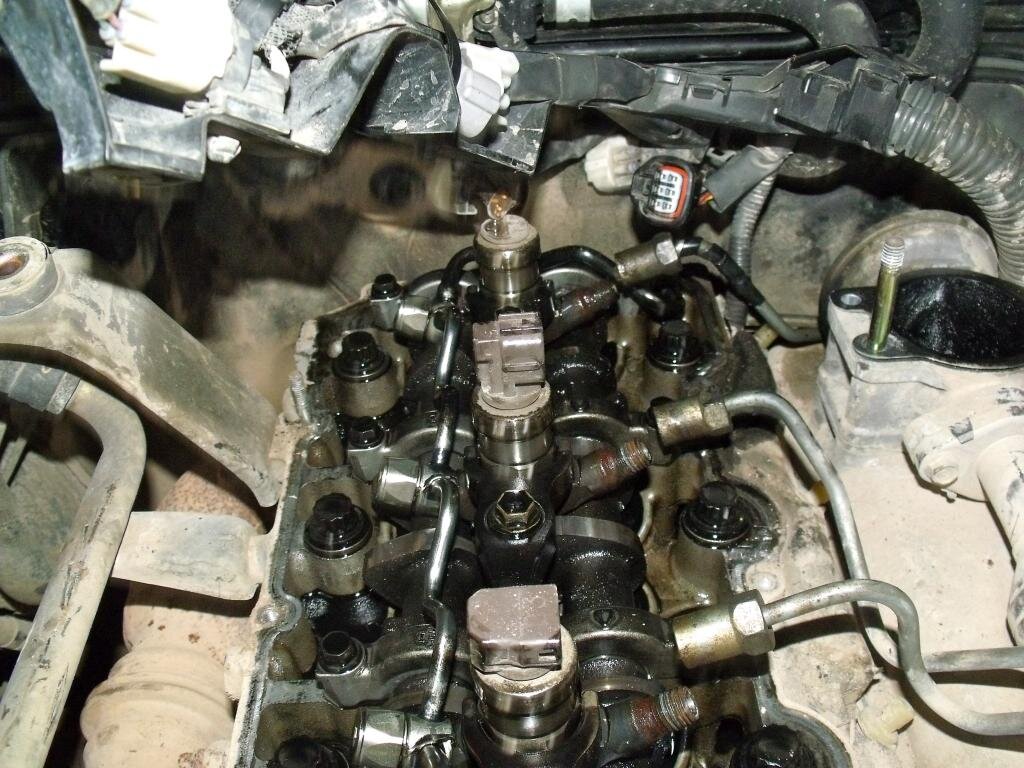
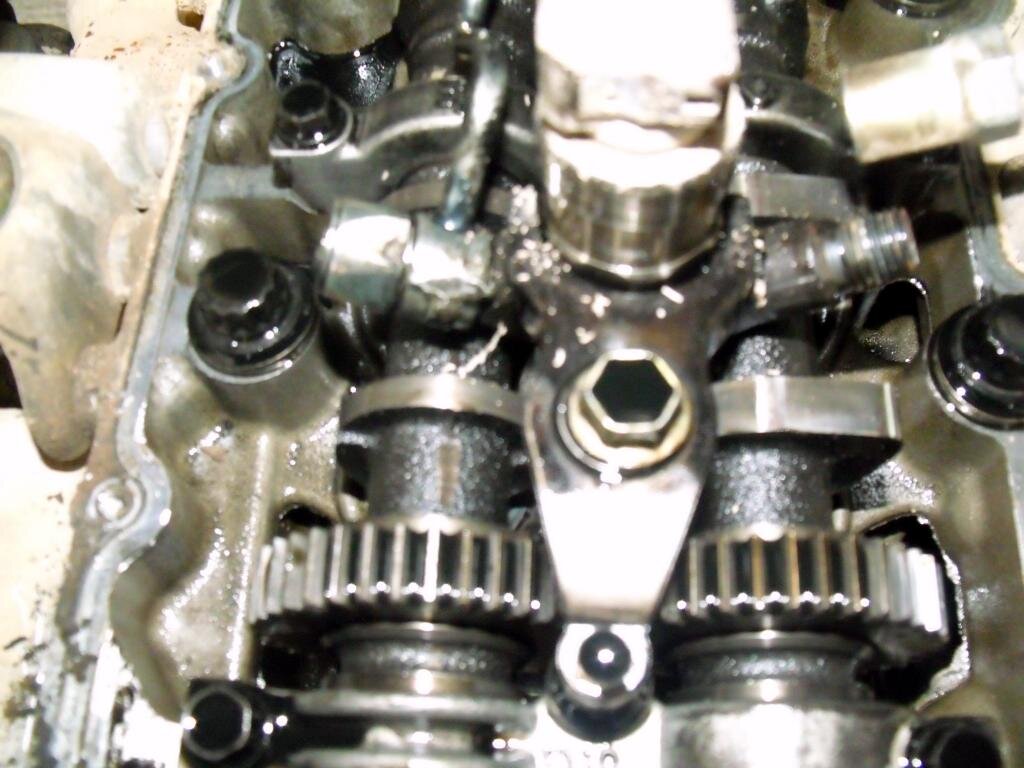
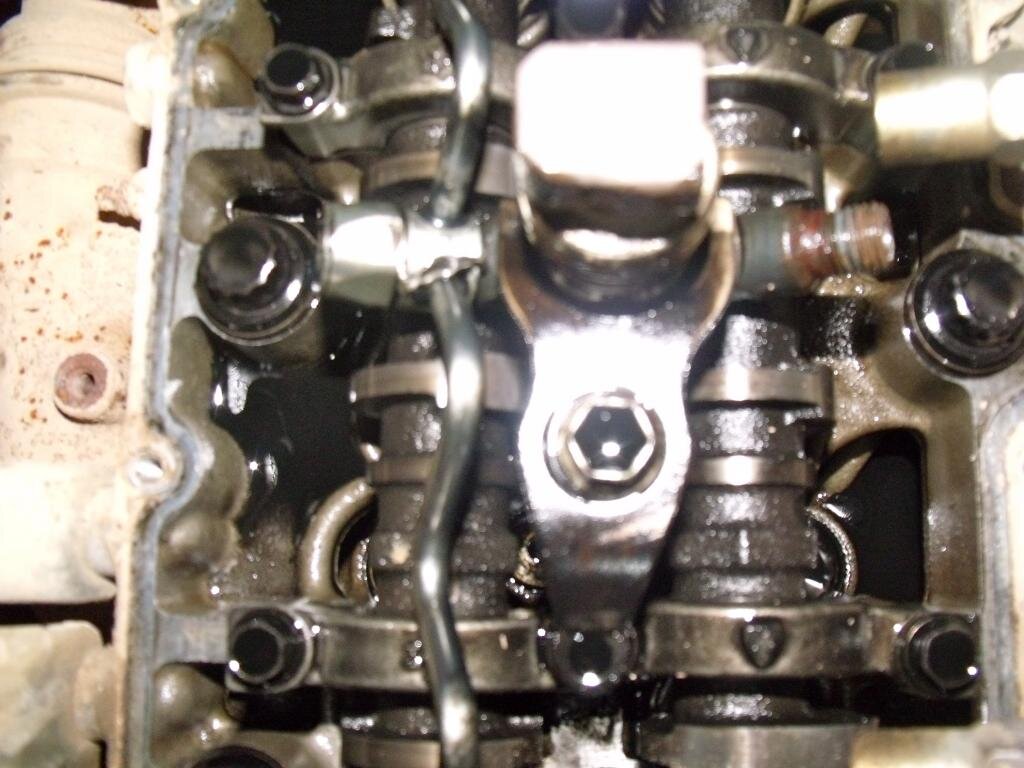

Phew!!
Have you ever seen a more beautifully clean top end after 155,000 miles! No signs of blow by or coking and it appears that the religious 5000 mile oil changes for the last 80,000 miles have paid off.
So, on to injectors.
Now, Tommo being Tommo, the more eagle eyed amongst you will have noticed the top of injector 4. Yes, being a total animal i managed to snap the solenoid off the top of injector 4 whilst removing the rocker cover, a v f*cking expensive mistake as it turns out!
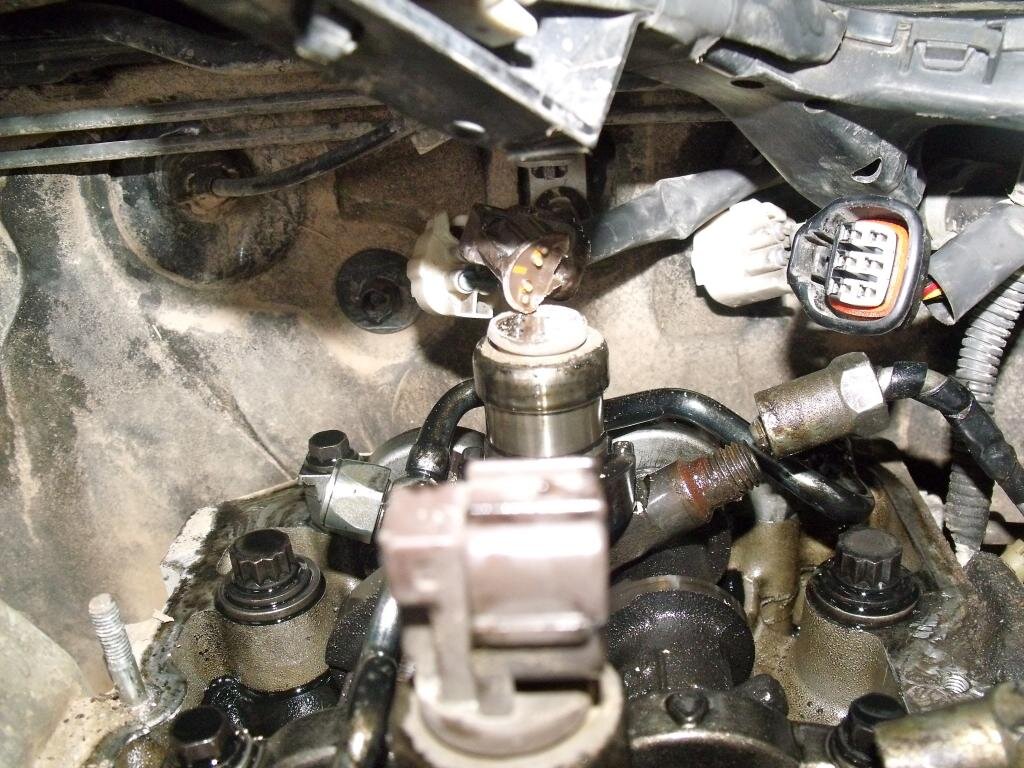
The company i used for the injectors was Diesel Jones in Manchester. They charge 15 quid to test an injector, they can provide a reconditioned injector for 165 quid and a new one for 195. So i sent off my injectors and they tested 1 to 3 which were all fine and that includes testing the washers and seals for blow by and found absolutely no signs whatsoever, so, good news there. They also provided me a new number 4.
Now i've also found out a lot about the injectors which i didn't know:
The Denso injectors used in the D4D are the second most common in production today and are used in everything from the Yaris all the way up to the Scania HGV tractor units.
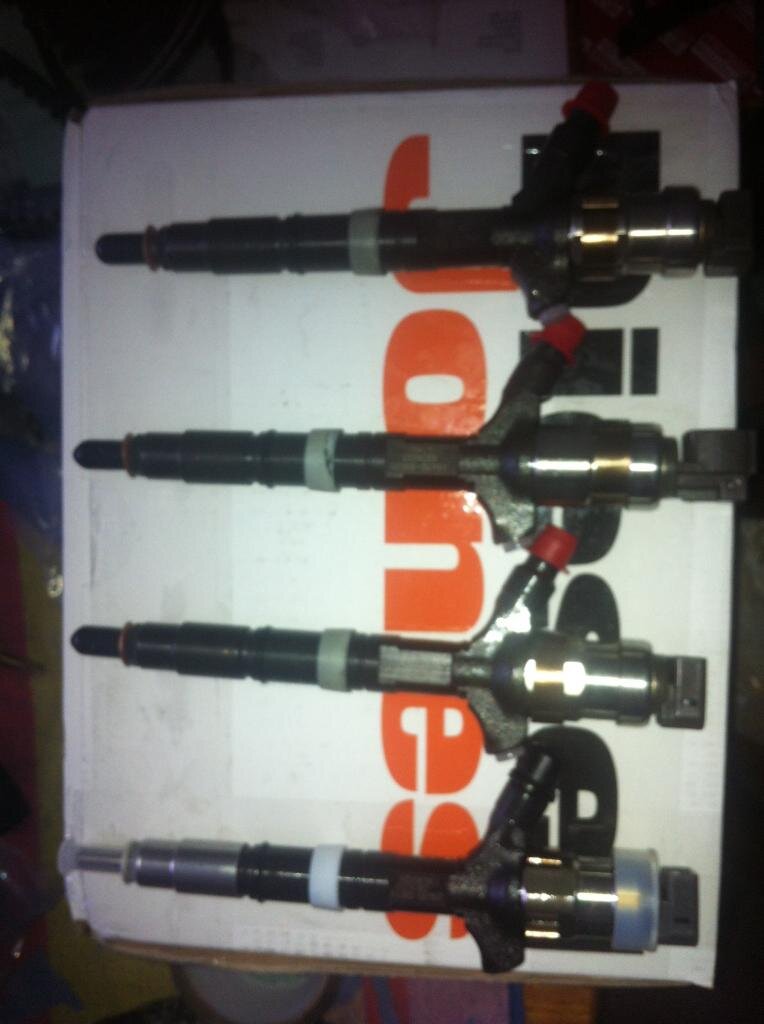
The body of the injectors is the same regardless of what engine they're going in, what is different is the solenoid and the program that is in it. The solenoid is obviously the electric bit on the top with the plug on it. This connects to the ECU etc and tells the injector when to open and for how long. Also each injector has to be coded before use, i.e my new injector had to be told "you are now injector 4 in a 3.0 D4D engine" as opposed to injector 2 in a Scania HGV for example. So if you ever take the injectors out of a D4D you need to make sure that they go back in the right cylinders or the engine will not work!
Anyway, all were fine and are back, ready to go back in the engine.
To be continued...
I know you are all fans of rebuild type threads with pics so i thought id add my own for you all to see. Plus it'll provide some interesting background on certain D4D issues i which i know worry some.
Background:
I was out having some axle twisting, mud plugging fun back in September when out of nowhere my beloved truck began making some concerning noises. Noises i had never heard before. A groaning, squealing, high pitched scraping which increased in volume and pitch with engine speed. Although i obviously suspected the turbo, at this stage i had no loss in boost pressure and other than the noise the truck appeared to be running just fine. That being said i thought it was best if i called an end to the off road antics and retired home for more diagnosis. Other than the noise, the truck made it all the way back to Fareham on the motorway (around 50 miles) and literally about one mile from the house i lost turbo pressure and limped it home billowing clouds of blue smoke. But being a Land Cruiser of course, she got us home safe!
I got up the next morning having slept on the problem a bit and i knew that the truck would now be off the road till approximately July 13. The plan at that stage was that i was deploying overseas in january and all my time between then and getting on the plane would be spent in training, so the plan was to SORN it, stick it in the garage and deal with it on my return. In the meantime i have been running a petrol 80 with LPG which i have borrowed off Les, so now i have an interesting perspective on the ownership of land cruisers almost at the two ends of the scale! Also i broke my ankle in deployment training so didn't end up deploying after all, thus i now have time to mess with it.
Disassembly:
So firstly and most obviously, the turbo has got to come out, easier said than done with a D4D unit in a 90 series engine bay! Not a great deal of room to work, but between myself Greg and Les we managed it, here are some pics along the way.
So to get the turbo out you can either go in via the off side wheel arch, but that would entail the removal of the entire suspension and hub assembly, which having done that to replace all the bushes was not a job i particularly wanted to repeat.
The other option is from the top, but that means that the intercooler, throttle assembly, exhaust manifold etc have got to come off. still a pain but the lesser of two evils. Whilst apart it also gave me a chance to see how coked up my throttle and EGR assembly was...
As you can see, not a huge amount of room to work, but its all pretty logically laid out and other than access issues, comes apart pretty easily.







To get the intercooler off you need to remove the throttle assembly and from there you get get access to the EGR. I thought after 155000 miles the throttle and EGR would be well coked up but in fact it's not too bad as you can see, and rather than take it all to pieces and give it a good clean out i think i shall use some spray EGR cleaner once she's running again during the rebuild before the intercooler goes back on.
Right the turbo, sorry i didn't take pictures of this but, it's a turbo, a muddy one but just a turbo and i was busy, oily and muddy at the time so forgot to take pictures! As soon as we got the feed pipe to it off the problem was identified. The main bearing that the blades spin on was very loose. If you put your finger on the central spindle then you could wiggle it about 2mm in every direction, so problem located, knackered bearing. Of course because of this, the blades had been impacting the inside of the turbo housing and 200,000 rpm and were also knackered.
So the turbo went off to Universal Turbos in Ringwood for reconditioning. Fortunately we went through a friend of a friend and got the job for cash and it comes in at 500 quid. Quite expensive after xmas! However, this basically is where they take your turbo and replace the insides, so new bearings, blades, seals etc, basically all mechanical parts but does not include the electrics or "the brain" of your turbo. For those of you who have no experience of D4D turbos, this is what i have learned:
The D4D Turbo is a specialist Toyota item, which is why it's so expensive to replace and repair, it's not a Garret or any other common make. It is what's known as a variable vane turbo because, unlike the turbo in say an 80, the blades alter their pitch similar to the propellors on an aircraft or a ship. The computer on the turbo measures the flow through the turbo and the throttle position (hence the reason why D4Ds are fly by wire) and alters the pitch of the blades. This means that when you first put your foot down for example, the blades are at a very low angle of pitch relative to the airflow, reducing the resistance and allowing the turbo to get up to speed quicker, hence next to no turbo lag in the D4D engine. Then as the blade speed increases, it winds on the pitch, increasing the output and the power, giving you a nice power curve right the way up to the redline. Clever no?
And before i get bored to death with the same old "all these clever electrics, they just fail" shit, i asked the guy at universal turbos the same question and he's been doing this for thirty years and has yet to see the brain on a toyota turbo fail, he has NEVER replaced one.
So, problem solved?..... No
I'm sure all your engineering brains are screaming "yes but why did the turbo fail in the first place????"
Well, as it happens, so was mine.
So immediately i had nightmares about injector washer failure and blow by causing my engine to look like the boiler on an old steam ship! Usually, turbos fail for a reason, and the most common of these is an interruption in the oil supply as all the spinning parts are sitting on a thin coating of oil, an interruption is catastrophic! So, in short, theres no point in paying out 500 notes for a turbo recondition because it'll just happen again not far down the line.
So, the rocker cover has to come off and the sump so i can check the strainer. And as the rocker cover is coming off the injectors are coming out and being sent off for test to see what state they're in after 155000 miles.

So with my heart in my mouth, the rocker cover came off. I knew that my engine was far too old to have any of the crap injector seal issues but i was crapping myself anyway!







Phew!!
Have you ever seen a more beautifully clean top end after 155,000 miles! No signs of blow by or coking and it appears that the religious 5000 mile oil changes for the last 80,000 miles have paid off.
So, on to injectors.
Now, Tommo being Tommo, the more eagle eyed amongst you will have noticed the top of injector 4. Yes, being a total animal i managed to snap the solenoid off the top of injector 4 whilst removing the rocker cover, a v f*cking expensive mistake as it turns out!

The company i used for the injectors was Diesel Jones in Manchester. They charge 15 quid to test an injector, they can provide a reconditioned injector for 165 quid and a new one for 195. So i sent off my injectors and they tested 1 to 3 which were all fine and that includes testing the washers and seals for blow by and found absolutely no signs whatsoever, so, good news there. They also provided me a new number 4.
Now i've also found out a lot about the injectors which i didn't know:
The Denso injectors used in the D4D are the second most common in production today and are used in everything from the Yaris all the way up to the Scania HGV tractor units.

The body of the injectors is the same regardless of what engine they're going in, what is different is the solenoid and the program that is in it. The solenoid is obviously the electric bit on the top with the plug on it. This connects to the ECU etc and tells the injector when to open and for how long. Also each injector has to be coded before use, i.e my new injector had to be told "you are now injector 4 in a 3.0 D4D engine" as opposed to injector 2 in a Scania HGV for example. So if you ever take the injectors out of a D4D you need to make sure that they go back in the right cylinders or the engine will not work!
Anyway, all were fine and are back, ready to go back in the engine.
To be continued...

